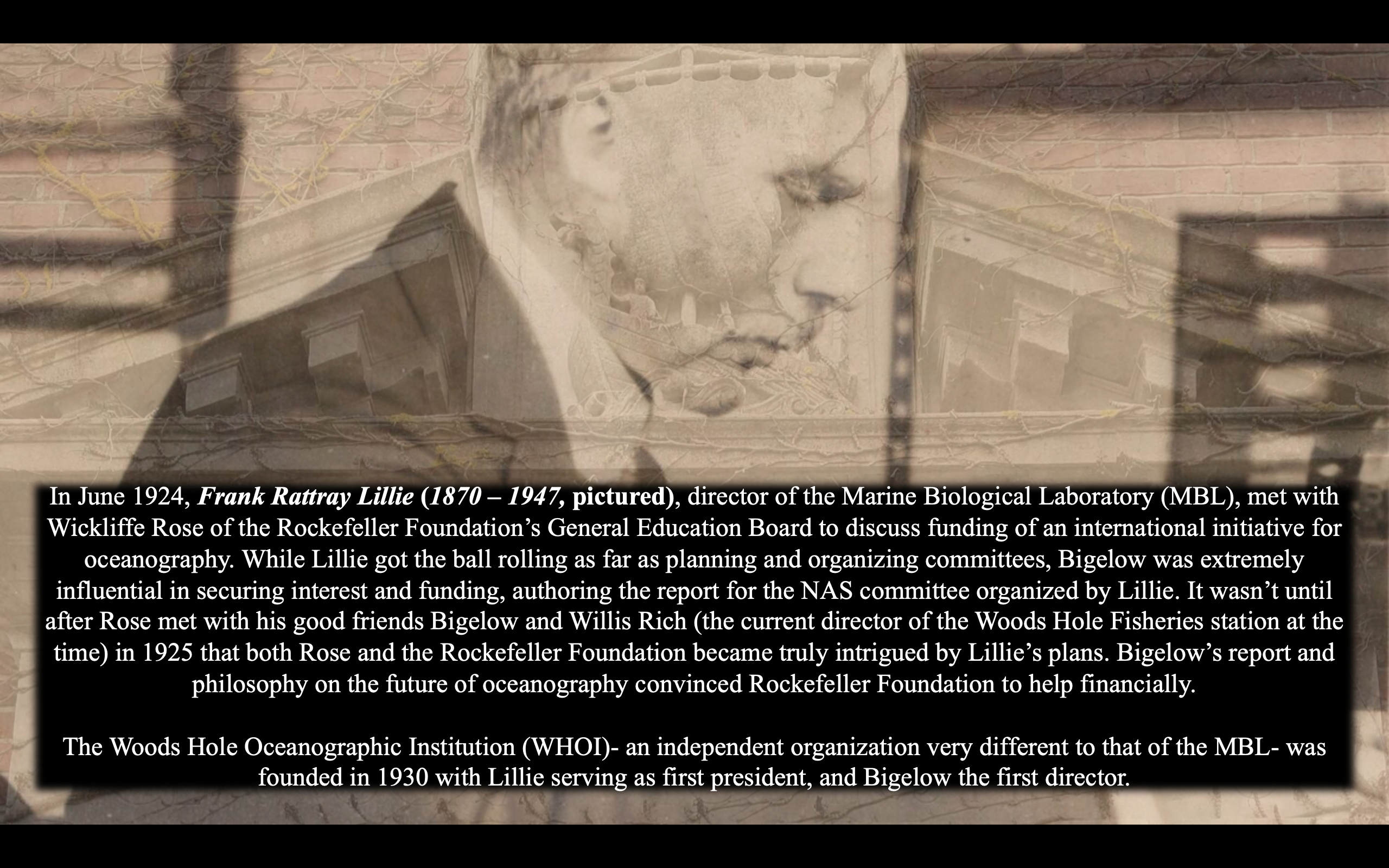150 Years of Woods Hole Science
38

Background image overlay: Bigelow entrance, Credit- S. Terrell Jinson
Background image: Frank Rattray Lillie Marine Biological Laboratory Archives https://hdl.handle.net/1912/16275
References:
Cullen, V., 2005. Down to the sea for science: 75 years of ocean research, education, and exploration at the Woods Hole Oceanographic Institution. Woods Hole Oceanographic Institution.
pp. 8-11
Burstyn, H.L., 1980. Reviving American oceanography: Frank Lillie, Wickliffe Rose, and the founding of the Woods Hole oceanographic institution. In Oceanography: the past (pp. 57-66). Springer, New York, NY.
p. 60:
“Rose’s first task as President of the [International Education] Board was to travel for five months, visiting more than fifty institutions in nineteen countries. He returned to New York with two goals for his philanthropy: to make agriculture more scientific and to ameliorate the effects of the war on institutions of learning. One of the people Rose consulted on his trip abroad was William Bate Hardy, F. R. S., a biophysicist who served Britain’s Department of Scientific and Industrial Research as both director of food investigation and superintendent of the Low Temperature Research Station at Cambridge. An outstanding sailor who at one time turned his yacht into a floating laboratory for marine biology, Hardy was chairman of the United Kingdom’s advisory committee on fisheries. Hence he was able to persuade to Rose both of the importance of fisheries to agriculture and of fundamental science to fisheries. On his return to the United States, Rose began to consult various people about the way in which the General and International Education Boards might help fishery science and other areas of applied biology.”
pp. 60-61:
“Under Rose’s leadership, the General Education Board in the United States and the International Education Board abroad (chiefly in war-ravaged Europe) were making large contributions to support pure scientific research in universities. In addition to giving capital grants, such as those to the Marine Biological Laboratory (an independent research station for university faculty), the Rockefeller philanthropies supported a substantial fellowship program administered by the National Research Council. As chairman of the fellowship board in biology ad agriculture, Lillie was an obvious person to give Rose advice on animal biology. The two men met for the first time when Rose visited Lillie at Chicago in June 1924 to solicit suggestions. They met again the following month in Woods Hole, when Lillie called a group of twenty biologists to his house to discuss with Rose the literature problem in biology. From this discussion came Rockefeller grants to establish Biological Abstracts.”